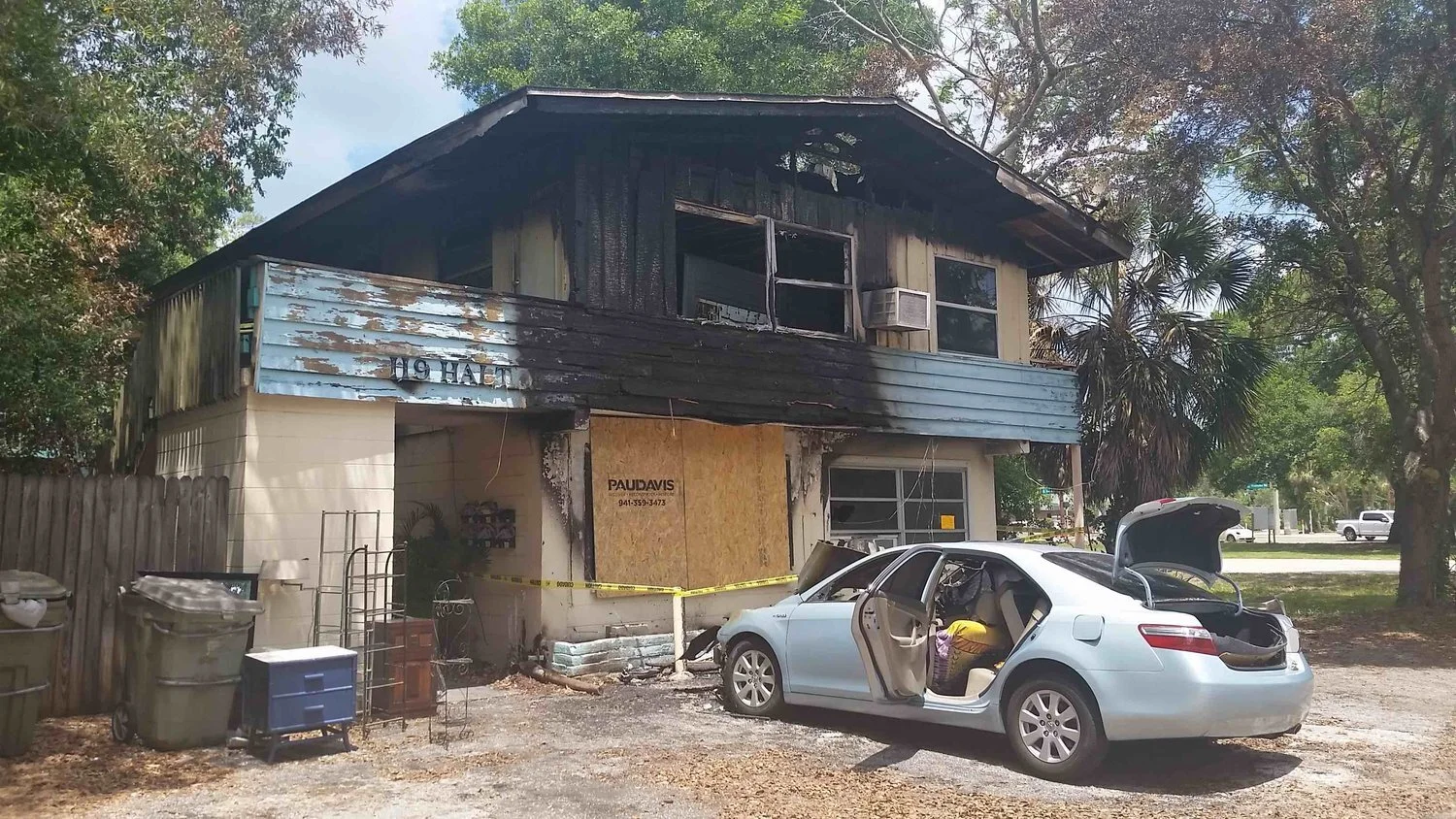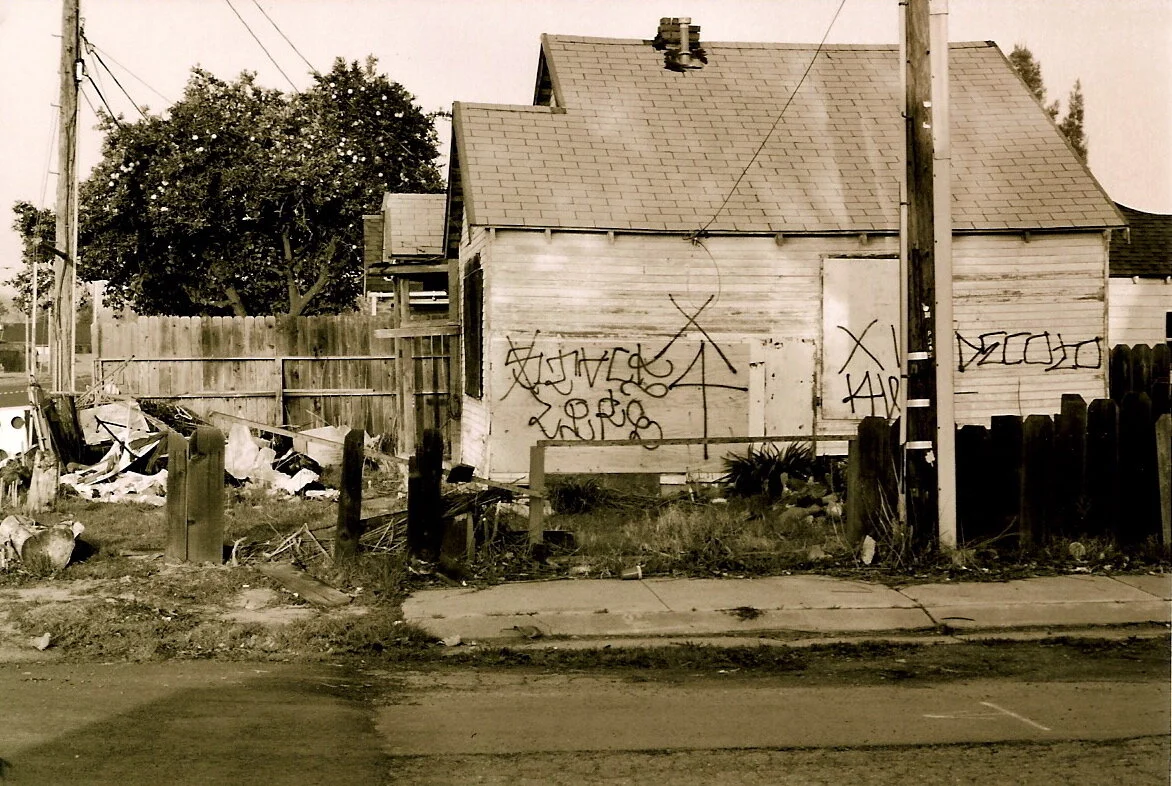Stop Believing in "Bad" Neighborhoods
The American development pattern creates winners and losers in dramatic fashion. In nearly every large city, only a handful of neighborhoods at a time are experiencing significant reinvestment or development, while a lot more are "no build zones" left in virtual stasis. Wealthy residents live in segregated, homogeneous enclaves. The working class often live in areas subjected to disruptive cycles of long, grinding decline and rapid redevelopment: a no-win choice between a trickle of investment or a fire hose.
In many of the "trickle" neighborhoods, long-term disinvestment in basic public services—the schools, the parks, the streets—exists in a vicious cycle with deepening concentrations of individual poverty. The poverty doesn't cause the disinvestment, but the disinvestment helps entrench the poverty.
There are tough neighborhoods and social problems everywhere on Earth, but the American commitment to building whole new worlds and letting old ones decay—our grand, ruinous suburban experiment—is singular. It doesn't just impoverish individuals and deny them opportunities. It has the same consequences for whole cities. Jason Segedy has written about how the history of Cleveland, for example, is inseparable from the history of suburbanization. In the half-century after World War II, the metro area more than doubled its built footprint while experiencing no net population growth. Put another way, those in the region with institutional and financial capital abandoned most of Cleveland to go build a whole new Cleveland on its outskirts. In the wake of this experiment, it's no surprise Cleveland's poor neighborhoods suffer from vacancy, neglect, and social dysfunction: it would be a miracle if they didn't.
Learn more about how we can address the challenges faced by our neighborhoods.
Sign up for our Academy course: Creating Housing Opportunities in a Strong Town.
This is all the more tragic because of the incredible value that the American abandon-and-rebuild approach to development implicitly consigns to the trash heap. We know that poor neighborhoods are often the places with the best urban bones, the ones designed in the most resilient ways, places that punch above their weight in (but not only in) financial productivity. We also know that they are so often places with immense social capital, history, and pride of place.
We need to abandon our ingrained habit of understanding these places as "bad" neighborhoods, and instead understand them as intrinsically good ones, whose all-too-real problems are addressable if we would only empower—truly empower—the people who care about these places to address them.
When You Grow Up With Something, You Think It's Normal
The chasm between "good" and "bad" neighborhoods has been engineered by government policy—most significantly redlining, in which investment capital was all but denied to huge swaths of cities. This often fell along explicitly racial lines, but you can go to cities that are lily-white and also find patterns of disinvestment, decay, and entrenched poverty.
Image via Flickr.
Most of us alive today grew up with this dynamic and thus learned to take it for granted. I was born in the 1980s in a Midwestern city: it didn't take long for me to grok that the "inner city" was poor and crime-ridden, that half of downtown was potholed parking lots, that the suburbs were full of rich, white people. It took me much longer to recognize that these patterns were not inevitable but created, and within my parents' lifetimes, at that.
Very few would say they see this state of affairs—the existence of vast "bad" parts of town—as desirable. But an unspoken belief that it's the normal state of things creeps into the way we talk about urban issues, the way we frame responses or solutions or imagine what is possible. This happens in obvious ways but also in some more subtle ways.
How the Belief in "Bad" Neighborhoods Poisons Our Thinking
The obvious way that it creeps into politics and policy is via exclusionary gatekeeping. Those who live in wealthy, homogeneous enclaves are often invested in keeping the neighborhood that way, through means such as housing policy that makes it almost impossible for a non-wealthy neighbor to move in. Relatively few of these people today are open bigots, but many more evince a more subtle, implied belief that the quality of the neighborhood derives from the absence of the wrong sorts of people. That belief isn't necessarily rooted in bigotry or snobbery: it may simply be rooted in the accurate observation that, over the lifetime of every American alive today, we as a society have systematically invested in the places where rich people live or would like to live, and systematically disinvested in and dismantled the places where poor people live.
What's less obvious is the ways in which vigorous opponents of segregation and exclusion adopt this same framing. Urban planning scholar Ed Goetz has written about this phenomenon, from which flows a lot of well-intended but misguided advocacy. For example, a lot of anti-poverty efforts in American cities over the past few decades have been geared at helping poor households move away from high-poverty neighborhoods, which may struggle with crime, gang activity, and poor educational outcomes. In experimental mobility programs in cities including Chicago and Baltimore, Section 8 vouchers were given preferentially to households who would use them to move to affluent suburbs. Research found mixed results for the families that participated, but a more recent study has found that their children derived significant lasting benefit from growing up in low-poverty environments.
All good, right? The problem is when efforts to help poor people escape come at the direct expense of place-based strategies to improve poor neighborhoods themselves. In Minnesota, one group of advocates, as described by Goetz, went so far as to file a complaint with HUD against the cities of Minneapolis and St. Paul for building too much affordable housing in high-poverty communities of color. The argument that a service such as subsidized housing should not go to the poorest neighborhoods, even though significant demand exists there, is based on the belief that to do so would be to entrench segregation.
Image via Flickr.
It's not that anyone on either side of this debate (which is largely between two camps of people both engaged in trying to help poor and non-white Americans) favors segregation itself, or thinks those who want to move to low-crime suburbs with good schools shouldn't have opportunities to do so. But left unspoken is what's supposed to happen to the poor neighborhoods themselves, branded as places of "low opportunity." Will the last person to leave turn out the lights?
Also unasked is whether residents want to leave. In fact, research on mobility programs has found that a lot of voucher recipients later opted to move back to their old neighborhoods. Unsurprisingly, residents of poor neighborhoods have a wide range of opinions on whether, given the choice, they would like to move, or would like to stay and see their home—where they already have networks family and friends, access to resources, and personal history—get better for them. That latter option should be plausibly on the table more often.
You can't premise a durable anti-poverty policy on moving the poor around. Aside from the disruption to the social fabric of communities, the growth of new concentrations of poverty over recent decades—many of them in the suburbs—makes clear that this is nothing but an endless game of Poverty Whack-a-Mole. There can be no end as long as we believe that "bad" neighborhoods are wherever low-income people live.
Another example of how zero-sum thinking about "bad" and "good" neighborhoods infects well-meaning advocacy is the scarcity mindset of some gentrification opponents. Everything from bike lanes to basic improvements to parks, sidewalks, and street lighting has been known to invite skepticism as to whom these amenities are "for." There are complex reasons for this that I don't wish to dismiss or diminish, but at least part of the reaction is the fear that making a neighborhood nicer is an effort to pave the way for an influx of wealthy newcomers. There is evidence that the cause and effect does not in fact run in this direction (here is a recent study in the case of bike lanes, which finds that they are not correlated with rising rents or displacement)—but the truth is that causes and effects in our complex cities are hard for any observer to pull apart neatly.
I suspect this fear is based less on evidence and more on our mental model of neighborhood quality, in which "good" places are those with a lot of rich people or a lot of white people. And if we're going to make a neighborhood better, it's hard to envision that process ending in anything other than people of means moving in and changing the place inexorably. Our existing model of development-by-cataclysmic-money simply doesn't offer many alternative precedents.
There Is An Alternative
A grad-school instructor of mine, in a course on Neighborhood Revitalization, asked the class, "What would it look like to plan for a working class neighborhood?" His point was that we rarely if ever do it. We implicitly assume that the working class are going to inherit the dregs of our cities, the hand-me-down places that wealthier people don't want.
It flips that logic on its head when you understand that poor neighborhoods make the best public investments. They are the places where there is the most immediate upside to be had from incremental improvements in the comfort, safety, appeal, and accessibility of the public realm. There is no reason comfortable, safe, pleasant, accessible places need to be scarce: we are a wealthy enough society that we could have cities where rich and poor neighborhoods alike have those characteristics.
But to avoid the trap of Poverty Whack-a-Mole, this is a change that has to be locally led, not directed by capital flows from outside. Cities can prioritize incremental investments in their poor and disinvested neighborhoods; they can direct planners to humbly observe residents' struggles and help seed and replicate positive changes. But to do this effectively, they must operate as servants of the people who occupy a place.
Changing our mindset about "bad' neighborhoods isn't magically going to change material reality. People in troubled neighborhoods need tangible things. They need jobs. They need safety. They need secure, decent housing. They need schools where their kids can focus on learning. They need the resources and power to secure these things for themselves. As that same instructor I mentioned above also told me, "Knowledge isn't power. Power is power."
But it is still important to change our shared understanding of what a "good" neighborhood can be, to allow it to encompass all the things that are good and rich with possibility even about places struggling with the problems of poverty. Allowing that opens up a much broader sense of what is possible. And of how we, as a society, might spend our resources to achieve cities where "good" neighborhoods getting better with time are the rule, not the exception.






Daniel Herriges has been a regular contributor to Strong Towns since 2015 and is a founding member of the Strong Towns movement. He is the co-author of Escaping the Housing Trap: The Strong Towns Response to the Housing Crisis, with Charles Marohn. Daniel now works as the Policy Director at the Parking Reform Network, an organization which seeks to accelerate the reform of harmful parking policies by educating the public about these policies and serving as a connecting hub for advocates and policy makers. Daniel’s work reflects a lifelong fascination with cities and how they work. When he’s not perusing maps (for work or pleasure), he can be found exploring out-of-the-way neighborhoods on foot or bicycle. Daniel has lived in Northern California and Southwest Florida, and he now resides back in his hometown of St. Paul, Minnesota, along with his wife and two children. Daniel has a Masters in Urban and Regional Planning from the University of Minnesota.